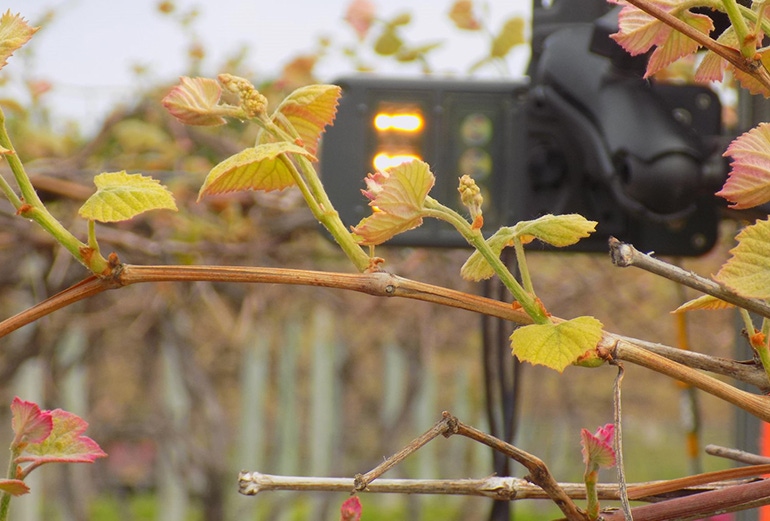
Production may be starting to slow down for the current season, but the ongoing work — and the ongoing learning on how to make that work more productive — continues with technology being the major topic.
The National Grape Research Alliance working in conjunction with USDA’s Agricultural Research Service, is presenting a learning session on November 13 termed “a science-based perspective on the current state of sensors for enabling precision viticulture practices.”
NGRA President Donnell Brown says: “At some point in the fairly recent past, some of these topics might have seemed like futuristic fluff, but today the topics are top of mind for the grape and wine industry. Like a recent speaker at a grower conference noted, ‘We’re not farmers anymore, we’re agriculture technologists.’
Brown has her own vision of the vineyard of the future. “Viticulture will one day look very different from the romantic vision in people’s imaginations, strolling vineyard rows, leisurely plucking fruit and swirling wine. Mechanized vineyards will look different, designed for machines to navigate and complete automated tasks and for sensors to collect and transmit crop data — but they’ll always be alive with the promise of the season and ultimately the fruit on the vine, on the table, and in the glass.”
As part of the NGRA mission to advance research that maximizes productivity, sustainability, and competitiveness of the American grape industries, a lot of today’s talk is about sensors, tools that deliver incredible amounts of critical data.
“Because technology advances to quickly, it’s hard to know what’s in the marketplace and what’s coming down the pipeline to provide tangible benefits to growers, hence a Sensor Technology Workshop with nearly three dozen speakers,” Brown says.
From sensors to irrigation
The Nov. 13 event in Sacramento will run the gamut of subjects from sensor technologies for vine and soil water status and irrigation management to the detection and control of diseases and pests.
The day-long seminar will discuss data integration and modeling applications that translate outputs of the sensors into understandable and usable information. Additionally, a grower panel will speak from real-life experience about their successes with sensor technology.
The event has been structured to be of benefit to industry members at large from the wine, juice, table grape, and raisin sectors to hear from techies about the sensor technologies supporting grape-growing today, the strengths and shortcomings of those offerings, and what advances there might be on the horizon.
The agenda is jam-packed with tech talks ranging from Vine Status and Irrigation Management; Pests and Diseases; Data Integration and Information Transfer, and Sensors in the Real world, an Industry Perspective in Applying Technology.
That panel will be moderated by Nick Dokoozlian, Vice President of Viticulture, Chemistry, and Enology at E&J Gallo Winery in Modesto (as well as Research Chairman for the National Grape and Wine Initiative). His professional responsibilities include innovation in grape and wine production including development of growing practices to improve grape yield and quality, i.e., implementing technology.
“The playing field has changed over the last five years because of an increased availability and diversity of a variety of sensors and platforms, both proximal and distal. There’s been a tremendous momentum in remote sensing, an exponential increase,” he says.
But what do you do with this newfound knowledge?
“The ability to integrate that data into something relevant to computational agriculture, using it to make informed decisions about production management, that hasn’t kept pace with technology development,” he says. “There’s a plethora of sensors available now, but which ones really matter to growers? Which ones can they use to impact their bottom line? And what do we need for the future in order to leverage more and more of the information they collect? We need the ability to gather and translate that data into actionable decisions.”
Asked how he planned to summarize his panel’s presentation, he replied: “The goal is a better understanding of how viticulture practitioners, vineyard owners, managers, vendors, and product providers, how they’re utilizing sensor data today and how we envision these platforms with integrated networks in the future.”
For more news on pests, disease management and other issues affecting vineyards, subscribe to the bi-monthly newsletter The Grape Line.
About the Author(s)
You May Also Like




